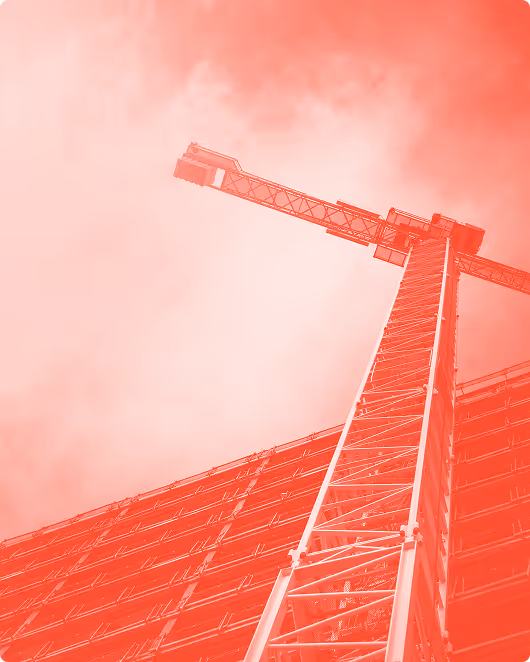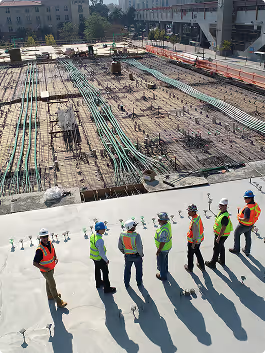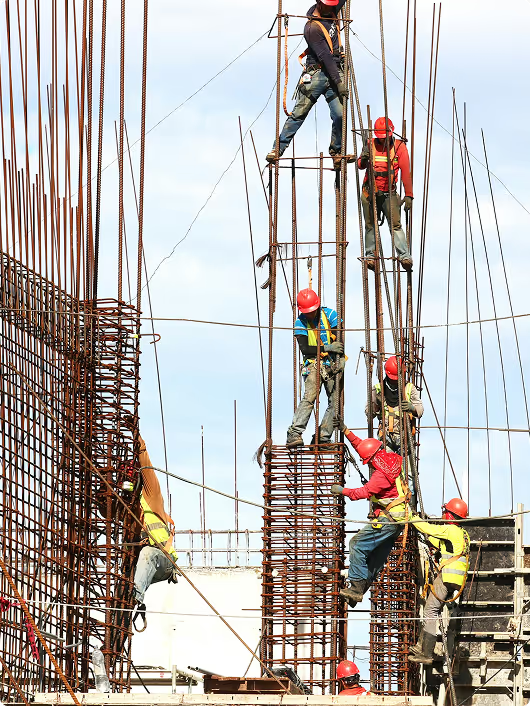There is a crisis unfolding in the background of American life.
You can see it in the skyrocketing housing prices, the scaffolding that never comes down, the headlines about labor shortages, steel prices, and climate deadlines. We are surrounded by the built environment, and yet we rarely question why it’s so hard and so expensive to build anything at all.
.avif)

Construction is the largest major market that has yet to be transformed by modern technology.
It represents 13% of global GDP and employs over 273 million people worldwide, yet it has largely remained stuck in an era before software, before data, before intelligent automation.
Productivity in the sector has grown at a third the rate of the global average over the last 20 years. In the U.S., it takes longer to build a home today than it did in 1971.

The industry has reached a tipping point. We are finally beginning to see the long overdue digital transformation of construction.
Software is entering the jobsite. Robotics are entering the trades. AI is replacing manual estimation. Embedded fintech is speeding up cash flow. Platforms are emerging to link once-siloed phases of planning, building, and financing.
By 2031, an estimated 41% of the U.S. construction workforce will retire, creating a massive gap in skilled labor.
Meanwhile, approximately 300,000 additional workers are needed each year to replace those leaving the workforce. Faced with fewer workers and rising demand, contractors are turning to automation, robotics, and digital tools out of necessity.
Construction and buildings generate 39% of global CO₂ emissions. Cities, owners, and regulators are now demanding tools that track carbon, reduce material waste, and promote energy efficiency which is driving interest in climate tech by the industry.
The pandemic forced the industry to digitize seemingly overnight. Remote site monitoring, virtual inspections, and cloud-based project management became essential and have since become the new normal. This cultural shift happened in less than two years, and it’s still accelerating.
We are facing a shortfall of 4.5 million homes in the U.S. alone. The inefficiencies of manual, paper-based systems can no longer keep pace with market demand—especially as developers seek faster, more cost-effective ways to build.
Project owners and developers are increasingly driving construction tech adoption by demanding greater visibility, speed, and accountability. A 2024 Dodge Construction Network study found that large owners are leading the industry in adopting digital workflows and real-time data tools to manage project risk and improve outcomes. This shift is making tech adoption less optional and more of a prerequisite for winning and delivering modern construction projects.
The Inflation Reduction Act, CHIPS Act, and Bipartisan Infrastructure Law are pumping hundreds of billions into infrastructure, housing, and clean energy, demanding execution at a scale and complexity that requires technology.
Construction’s leadership bench is changing. Project managers, supervisors, and developers are increasingly digital natives. They are people who grew up solving problems with technology.
.avif)

This is where Hometeam Ventures comes in. We are a venture capital firm purpose-built for early stage founders reimagining how we design, construct, and finance the physical world.
Hometeam exists to fund three of the greatest leverage points for double bottom line returns in our economy:
.avif)

Construction represents roughly 13% of global GDP and includes a wide range of investable subcategories: automation, supply chain, future or work, fintech, climate tech, and more. Each category contains opportunities for multi billion-dollar outcomes.
Construction tech is compelling for both it's size and its structure. Rather than a single vertical, construction is an ecosystem of interdependent, high-friction markets.
From 2012 to 2022, investment in construction tech grew more than 16-fold, as early successes like Procore, PlanGrid, and Levelset proved venture-scale outcomes were achievable.
But even today, construction tech continues to lag behind comparable sectors like fintech, healthtech, and logistics in total venture dollars invested, despite the strength of its founders and the quality of emerging startups.
.avif)

The essential nature of construction, driven by persistent demand for housing and core infrastructure, makes it one of the most resilient sectors of the economy.
During periods of growth, construction activity surges, fueling employment and investment. In downturns, the industry plays a central role in recovery.
Public spending on infrastructure remains a common tool to stimulate economic growth, helping construction rebound faster than most other sectors.
The COVID-19 pandemic reinforced this role. Construction was quickly deemed essential, and in most states, job sites reopened within weeks. The industry adapted quickly, embracing tools like digital inspections and remote collaboration at an unprecedented pace.
That momentum has not slowed. Today, rising pressure on housing supply, climate mandates, and labor shortages have pushed the industry to adopt new technologies with continued urgency. Hometeam Ventures exists to help that progress scale.

Many of society’s toughest problems are physical, and the biggest returns will come from solving them. The infrastructure of the future we inhabit can be affordable, sustainable, and equitable.